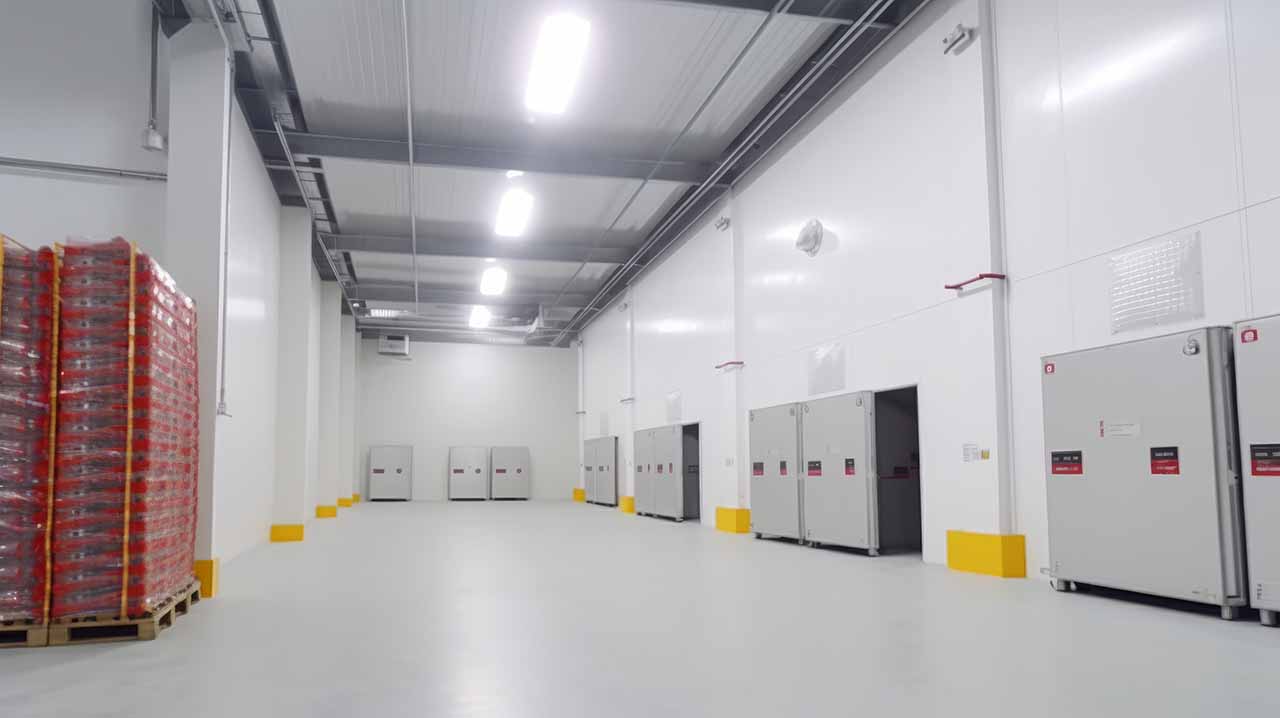Temperature-Controlled Warehousing: A Key Component of Georgia’s Cold Storage Infrastructure
Jan 30, 2024
BlogIn recent years, the demand for temperature-controlled warehousing facilities has rapidly increased, and Georgia has emerged as a major player in this sector. Georgia’s strategic location, efficient transportation networks, and thriving food industry make it an ideal hub for temperature-controlled warehousing, cold storage warehousing, refrigerated warehousing, climate-controlled warehousing, and frozen storage warehousing. In this article, we will explore the significance of these warehousing types in Georgia and their impact on the state’s economy.
Temperature-Controlled Warehousing:
Temperature-controlled warehousing refers to facilities that provide precise temperature and humidity control. These warehouses are designed to store goods that require specific environmental conditions to maintain their quality, such as pharmaceuticals, perishable food items, and sensitive electronics. They utilize advanced technologies like refrigeration, insulation, and environmental monitoring systems to ensure consistent temperature control.
Georgia’s Cold Storage Warehousing:
Cold storage warehousing focuses on maintaining low temperatures typically below freezing point. Georgia benefits from a temperate climate, making it easier to establish and operate cold storage facilities. The state’s cold storage warehouses cater to the needs of industries such as agriculture, food processing, and pharmaceuticals. They store products like fruits, vegetables, dairy products, seafood, and vaccines, ensuring their freshness and quality until distribution.
Refrigerated Warehousing:
Refrigerated warehousing involves the storage of goods at temperatures above freezing point but below room temperature. This type of warehousing is critical for various industries, including the beverage industry, meat and poultry processing, and floral distribution. Georgia’s refrigerated warehouses play a key role in maintaining the integrity of temperature-sensitive products and facilitating their transportation to regional and international markets.
Climate-Controlled Warehousing:
Climate-controlled warehousing aims to maintain specific temperature ranges to protect products from extreme temperatures. These facilities are suitable for storing goods that are sensitive to temperature fluctuations, such as art, wine, cosmetics, and electronics. Georgia boasts climate-controlled warehouses that offer state-of-the-art facilities, including insulation, air conditioning, and humidity control systems to safeguard valuable and delicate products.
Frozen Storage Warehousing:
Frozen storage warehousing is specifically designed to store products at extremely low temperatures, typically below -18 degrees Celsius (-0.4 degrees Fahrenheit). In Georgia, frozen storage facilities are prominent in the frozen food industry, ensuring that perishable goods like frozen fruits, vegetables, ice cream, and frozen meat products remain preserved throughout the supply chain. These warehouses utilize advanced freezing and storage technologies to maintain the quality and safety of frozen products.
Impact on Georgia’s Economy
The presence of temperature-controlled warehousing, cold storage warehousing, refrigerated warehousing, climate-controlled warehousing, and frozen storage warehousing in Georgia has significantly contributed to the state’s economy. These facilities have attracted investments and created job opportunities across various industries. They have played a pivotal role in supporting Georgia’s agricultural sector, food processing industry, and logistics network, enabling efficient storage, distribution, and export of temperature-sensitive products.
Conclusion
Temperature-controlled warehousing, including cold storage, refrigerated, climate-controlled, and frozen storage facilities, are crucial components of Georgia’s logistics infrastructure. Their ability to maintain optimal environmental conditions for various goods has strengthened the state’s position as a major distribution hub. The growth of these warehousing types has brought economic benefits to Georgia, diversifying its industries and providing valuable support to sectors that rely on proper temperature management.


 Dave McGowan has been a member of the WEL Family since May 1989. He is a husband and father of two children. Dave is also a U.S. Army veteran and served in Vietnam in 1971-1972, and he attended driving school soon after he was released from the military in 1974.
Dave McGowan has been a member of the WEL Family since May 1989. He is a husband and father of two children. Dave is also a U.S. Army veteran and served in Vietnam in 1971-1972, and he attended driving school soon after he was released from the military in 1974. During his career with WEL, Phil has worked as a driver, dispatcher, terminal manager and customer service manager. He says he always was a driver first, though non-driving jobs taught him financial management that helps him as an owner-operator.
During his career with WEL, Phil has worked as a driver, dispatcher, terminal manager and customer service manager. He says he always was a driver first, though non-driving jobs taught him financial management that helps him as an owner-operator.